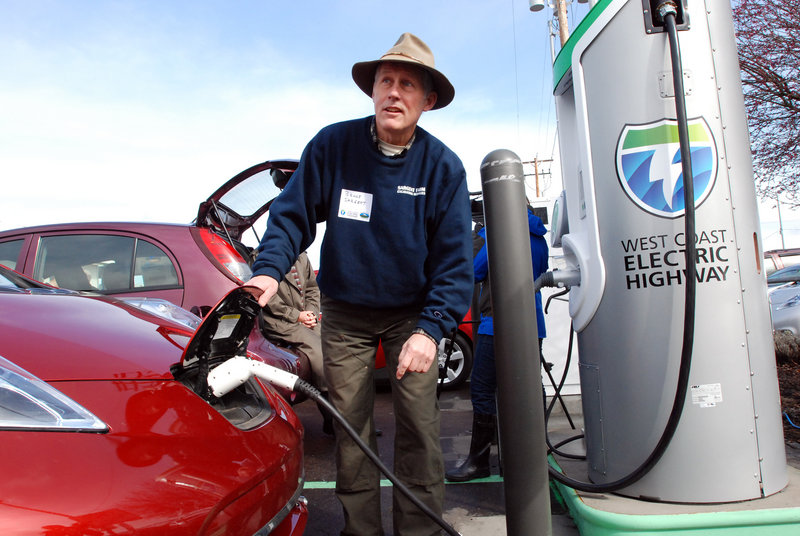CENTRAL POINT, Ore. – Following a trail blazed by Indians and pioneers in covered wagons, electric car drivers hit the road Friday to inaugurate the first major section of a West Coast “Electric Highway” dotted with stations where they can charge up in 20 minutes.
The stretch of 160 miles of Interstate 5 served by eight stations marks the next big step in developing an infrastructure that until now has been limited primarily to chargers in homes and workplaces.
The stations go from the California border north to the Oregon city of Cottage Grove and are located at gas stations, restaurants and motels just off the nation’s second-busiest interstate. One is at an inn that was once a stagecoach stop.
Spaced about every 25 miles, the stations allow a Nissan Leaf with a range of about 70 miles to miss one and still make it to the next. Electric car drivers will be able to recharge in about 20 minutes on the fast-chargers. The charge is free for now.
“I would say range-anxiety with these fast chargers will be nearly a non-issue for me,” said Justin Denley, who owns a Nissan Leaf and joined the caravan.
Inspired by the stations, his family is planning a trip from Medford to Portland, a distance of about 280 miles. Last summer, he took the family on a 120-mile trip to the coast and had to include an overnight stop at an RV park to charge up.
He expects the trip to Portland to take three hours longer than in a gas car, because the only chargers available for the last 100 miles are Level 2 chargers.
Level 1 car chargers use 110 volts, like a regular home outlet, and it can take an entire night to charge a vehicle. Level 2 uses 240 volts, like a home dryer or range, and can charge a car in three or four hours.
But Level 3, which uses 480 volts of direct current, makes en route charging feasible by boosting a Nissan Leaf’s 45-kilowatt battery from a 20 percent charge to 80 percent in less than 30 minutes.
Bruce Sargent said he barely noticed the difference in his electric bill when he was using a Level 1 charger at home. When he installed a Level 2 charger, it went up about $15 a month, still far below what he was spending on gas.
Interstate 5 stretches 1,350 miles from British Columbia to Baja, Calif. The section from Ashland to the Willamette Valley follows an ancient Indian trail that was expanded by pioneers who blazed a southern branch of the Oregon Trail in the 1840s. Governors of Oregon, California and Washington signed an agreement to turn I-5 into an “Electric Highway” in 2009.
Copy the Story Link
Send questions/comments to the editors.



Success. Please wait for the page to reload. If the page does not reload within 5 seconds, please refresh the page.
Enter your email and password to access comments.
Hi, to comment on stories you must . This profile is in addition to your subscription and website login.
Already have a commenting profile? .
Invalid username/password.
Please check your email to confirm and complete your registration.
Only subscribers are eligible to post comments. Please subscribe or login first for digital access. Here’s why.
Use the form below to reset your password. When you've submitted your account email, we will send an email with a reset code.